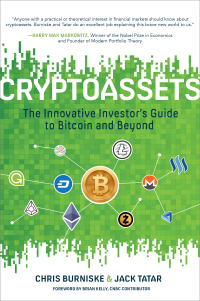
Assessing the Impact of Suarez Manufacturing's Proposed Risky Investment on Its Stock Value Early in 2013, Inez Marcus, the chief financial officer for Suarez Manufacturing, was given the task of assessing the impact of a proposed risky investment on the firm's stock value. To perform the necessary analysis, Inez gathered the following information on the fim's stock. During the immediate past 5 years (2008-2012), the annual dividends paid on the firm's common stock were as follows: (Click on the icon here in order to copy the content of the data table below into a spreadsheet.) Year Dividend per share 2012 $1.90 2011 1.70 2010 1.55 2009 1.40 2008 1.30 a. Find the current value per share of Suarez Manufacturing's common stock. The growth rate of dividends is 0% (Round to two decimal places.) The current value per share will be $ (Round to the nearest cent.) b. Find the value of Suarez's common stock in the event that it undertakes the proposed risky investment and assuming that the dividend growth rate stays at 13.0% forever. Compare this value to that found in part (a). The value of common stock if the risky investment is made will be $ (Round to the nearest cent.) What effect would the proposed investment have on the firm's stockholders? Explain. (Select from the drop-down menu.) The higher growth rate associated with undertaking the investment the market value of the stock. c. On the basis of your findings in part (b), do the stockholders win or lose as a result of undertaking the proposed risky investment? Should the firm do it? Why? (Select from the drop-down menus.) The firm undertake the proposed project. The price per share by $19.99. Although risk V and the required return, the dividend growth offsets this risk resulting in a net d. Rework parts (a) and (b) assuming that at the beginning of 2016 the annual dividend growth rate returns to the rate experienced between 2008 and 2012. The annual per share dividend for 2014 will be $. (Round to the nearest cent.) The annual per share dividend for 2015 will be $. (Round to the nearest cent.) The annual per share dividend for 2016 will be $. (Round to the nearest cent.) The value per share for 2015 will be $O. (Round to the nearest cent.) Assuming the lower growth rate beginning in 2016. the value per share today will be sh. (Round to the nearest cent.) in value] Enter your answer in each of the answer boxes. Assessing the Impact of Suarez Manufacturing's Proposed Risky Investment on Its Stock Value Early in 2013, Inez Marcus, the chief financial officer for Suarez Manufacturing, was given the task of assessing the impact of a proposed risky investment on the firm's stock value. To perform the necessary analysis, Inez gathered the following information on the fim's stock. During the immediate past 5 years (2008-2012), the annual dividends paid on the firm's common stock were as follows: (Click on the icon here in order to copy the content of the data table below into a spreadsheet.) Year Dividend per share 2012 $1.90 2011 1.70 2010 1.55 2009 1.40 2008 1.30 a. Find the current value per share of Suarez Manufacturing's common stock. The growth rate of dividends is 0% (Round to two decimal places.) The current value per share will be $ (Round to the nearest cent.) b. Find the value of Suarez's common stock in the event that it undertakes the proposed risky investment and assuming that the dividend growth rate stays at 13.0% forever. Compare this value to that found in part (a). The value of common stock if the risky investment is made will be $ (Round to the nearest cent.) What effect would the proposed investment have on the firm's stockholders? Explain. (Select from the drop-down menu.) The higher growth rate associated with undertaking the investment the market value of the stock. c. On the basis of your findings in part (b), do the stockholders win or lose as a result of undertaking the proposed risky investment? Should the firm do it? Why? (Select from the drop-down menus.) The firm undertake the proposed project. The price per share by $19.99. Although risk V and the required return, the dividend growth offsets this risk resulting in a net d. Rework parts (a) and (b) assuming that at the beginning of 2016 the annual dividend growth rate returns to the rate experienced between 2008 and 2012. The annual per share dividend for 2014 will be $. (Round to the nearest cent.) The annual per share dividend for 2015 will be $. (Round to the nearest cent.) The annual per share dividend for 2016 will be $. (Round to the nearest cent.) The value per share for 2015 will be $O. (Round to the nearest cent.) Assuming the lower growth rate beginning in 2016. the value per share today will be sh. (Round to the nearest cent.) in value] Enter your answer in each of the answer boxes







